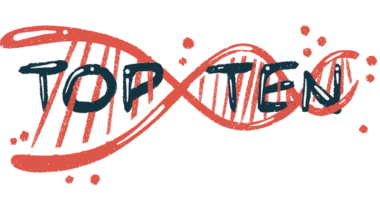DMD Has Its First Therapy, Exondys 51. Now, What Other Treatment Options Are There?

Monday’s announcement by the Food and Drug Administration (FDA) of accelerated approval for Exondys 51 (eteplirsen) injection, the first drug given approval for the treatment of Duchenne muscular dystrophy (DMD), was a much-celebrated likely conclusion to a debate that saw the resignation of Sarepta Therapeutics’ (makers of Exondys 51) CEO Chris Garabedian, targeted aggressive advocacy campaigns by parent groups, as well as a reversal of the FDA’s own advisory committee, which had voted against approval of the drug this year.
When commenting on the decision, Janet Woodcock, MD, director of the FDA’s Center for Drug Evaluation and Research, said: “In rare diseases, new drug development is especially challenging due to the small numbers of people affected by each disease and the lack of medical understanding of many disorders. Accelerated approval makes this drug available to patients based on initial data, but we eagerly await learning more about the efficacy of this drug through a confirmatory clinical trial that the company must conduct after approval.”
For patient advocates and caregivers this is a momentous opportunity and one that many, such as Debra Miller, founder and CEO of CureDuchenne, are celebrating. “The first FDA-approved treatment for Duchenne is a landmark in our fight against this disease. It provides hope for all Duchenne families,” she said. “Eteplirsen is a huge step forward in turning Duchenne muscular dystrophy from a fatal disease into a more manageable condition. Boys on eteplirsen have experienced improvements in quality of life that are amazing for a progressive disease that has remained without an approved drug for so long.”
But an important question for all touched by DMD — patients, family members, healthcare providers, and others — is what other treatment options are being explored for this debilitating disease.
In a recent article, “Advances in gene therapy for muscular dystrophies,” published in F1000 Research, researchers try to answer this question with a focus on investigational gene therapies.
The article gives a descriptive overview of three gene therapeutic strategies the researchers considered to be the “most advanced” presently under study as possible DMD treatments.
These treatments are:
- DMD gene addition by trans-splicing, a technique that involves the “replacement” of genes that cause DMD
- DMD gene editing, a techniques that involves the complete repair of disease-causing mutations to achieve a permanent correction within the genetic sequence
- DMD exon skipping, a technique that utilizes exons, the coding sections of the genetic sequence that lead to the replication of genes, by determining which exons to skip in an attempt to correct the genetic mutation associated with the disease.
Exondys 51 was designed based on the exon skipping technique, and is the process by which the drug achieves its therapeutic effect of inducing the production of dystrophin, the vital protein that allows for muscle recovery.
Exondys 51’s approval, and the advance techniques highlighted in the review, offer hope for those affected by DMD. As one parent of a patient said: “But there is now hope for our boys with Duchenne, hope for a brighter future. Research is starting to show results, more drugs are being developed to treat Duchenne. With more potential drugs there is more hope that my son and hundreds of other young men like him, will live full and rewarding lives standing on their own two feet.”
All stakeholders within the community, undoubtedly, will be awaiting the results of Sarepta Therapeutics’ post-approval confirmatory clinical trial.






